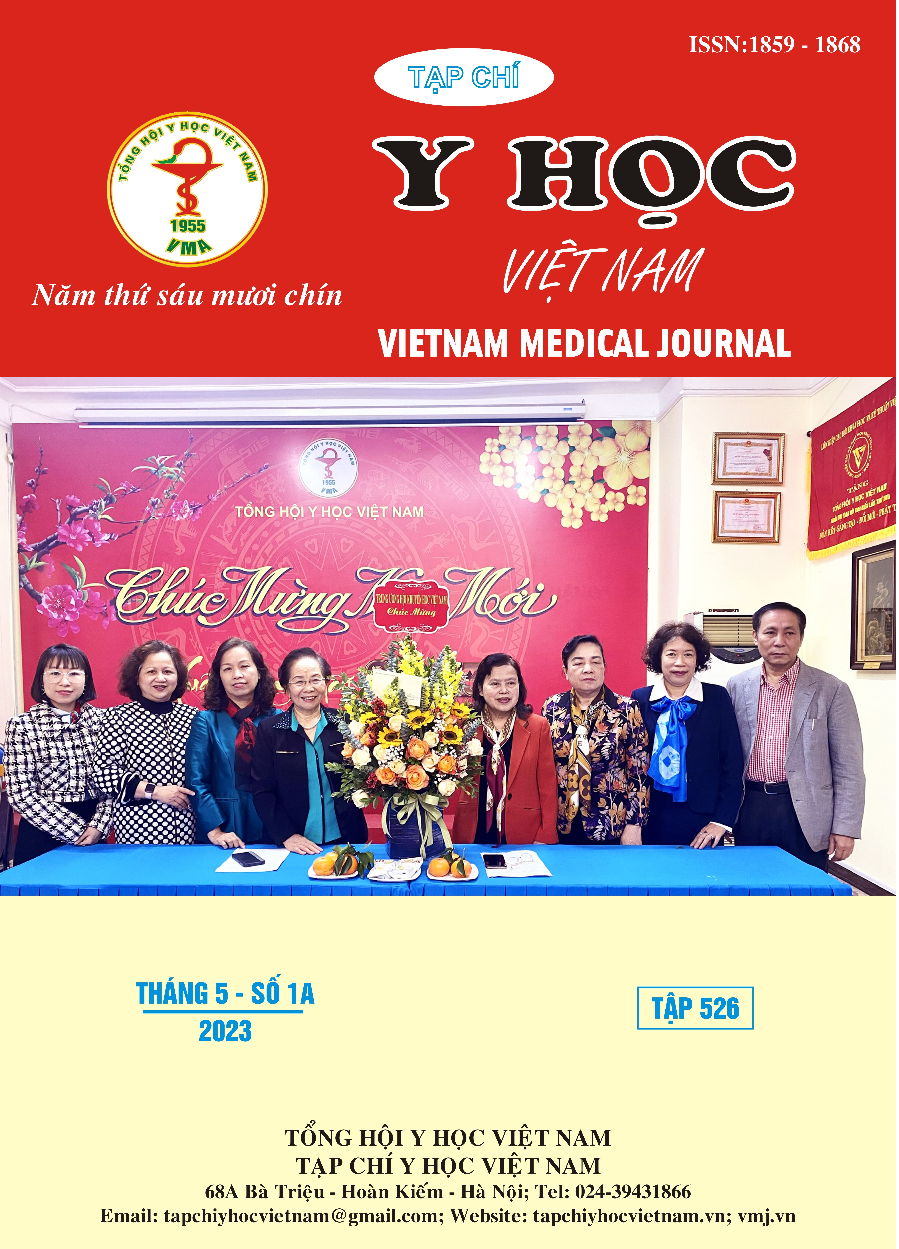CORRELATION BETWEEN TI-RADS, SIZE AND CYTOLOGY OF THYROID NODULES
Main Article Content
Abstract
Background: ACR-TIRADS released in 2017 helps to classify the risk of thyroid cancer based on the characteristics and size of the nodule on ultrasound to decide whether to do FNA for the patient. However, does thyroid nodule size correlate with malignancy. Obsject: To determine the risk of thyroid cancer when nodules classified as TI-RADS 3, 4, 5 with size as recommended and smaller than those by ACR-TIRADS 2017. Subjects – Methods: Thyroid nodules classified as TIRADS 3, 4 or 5 were divided into different sizes according to ACR-TIRADS 2017. Results: A total of 533 thyroid nodules from 416 patients met the study conditions. The risk of malignancies increased with higher TI-RADS classification (9% in TI-RADS 3, 12.8% in TI-RADS 4.5, and 55.4% in TI-RADS 5). With the cut-off point of TI-RADS 5, SEN, SPE, PPV, and NPV in thyroid cancer diagnosis were respectively 72.03%, 78.72%, 55.38%, 88.47%, (AUC=0.8). There is no correlation between the size and the risk of malignancy of the thyroid nodule on ultrasound. Conclusion: ACR-TIRADS 2107 is an easy-to-apply, highly accurate classification system for the classification of thyroid nodules based on ultrasound features to assess the risk of malignancy. The thyroid nodule's size does not appear to be a critical criterion for indication of FNA in nodules with high suspicion of malignancy on ultrasonography.
Article Details
Keywords
ACR- TIRADS 2017, kích thước nhân giáp trên siêu âm
References
2. Middleton WD, Teefey SA, Reading CC, et al. Multiinstitutional analysis of thyroid nodule risk stratification using the American College of Radiology Thyroid Imaging Reporting and Data System. American Journal of Roentgenology. 2017;208(6):1331-1341.
3. Tessler FN, Middleton WD, Grant EG, et al. ACR Thyroid Imaging, Reporting and Data System (TI-RADS): White Paper of the ACR TI-RADS Committee. Journal of the American College of Radiology. 2017/05/01/ 2017;14(5):587-595. doi:https://doi.org/10.1016/j.jacr.2017.01.046
4. Shen Y, Liu M, He J, et al. Comparison of Different Risk-Stratification Systems for the Diagnosis of Benign and Malignant Thyroid Nodules. Front Oncol. 2019;9:378. doi:10.3389 /fonc.2019.00378
5. Moon W-J, Jung S, Lee JH, et al. Benign and Malignant Thyroid Nodules: US Differentiation—Multicenter Retrospective Study 1. Radiology. 07/01 2008;247:762-70. doi:10.1148/ radiol.2473070944
6. Châu Thị Hiền Trang, Nguyễn Thanh Thảo, Hoàng Minh Lợi. Nghiên cứu ứng dụng phân loại Tirads trong chẩn đoán tổn thương dạng nốt tuyến giáp trên siêu âm. Tạp chí Điện quang & Y học hạt nhân Việt Nam. 2015;(21):17-22.
7. Trần Ngọc Thủy Tiên và cộng sự. Khảo sát sự tương quan giữa phân độ ACR TI- RADS và mô bệnh học trong đánh giá tổn thương nhân giáp. Luận văn thạc sĩ Y học. Đại học y Dược Tp. Hồ Chí Minh; 2021.
8. Trần Thị Lý, Lê Thị My, Nguyễn Thị Thu Thảo, Phạm Minh Thông. Giá trị của thang điểm EU-TIRADS 2017 và ACR-TIRADS 2017 trong đánh giá nhân tuyến giáp. Tạp chí Điện quang & Y học hạt nhân Việt Nam. 2020;(39):48-53.
9. Hoang JK, Langer JE, Middleton WD, et al. Managing incidental thyroid nodules detected on imaging: white paper of the ACR Incidental Thyroid Findings Committee. Journal of the American College of Radiology. 2015;12(2):143-150.
10. Kamran SC, Marqusee E, Kim MI, et al. Thyroid nodule size and prediction of cancer. The Journal of Clinical Endocrinology & Metabolism. 2013;98(2):564-570.


